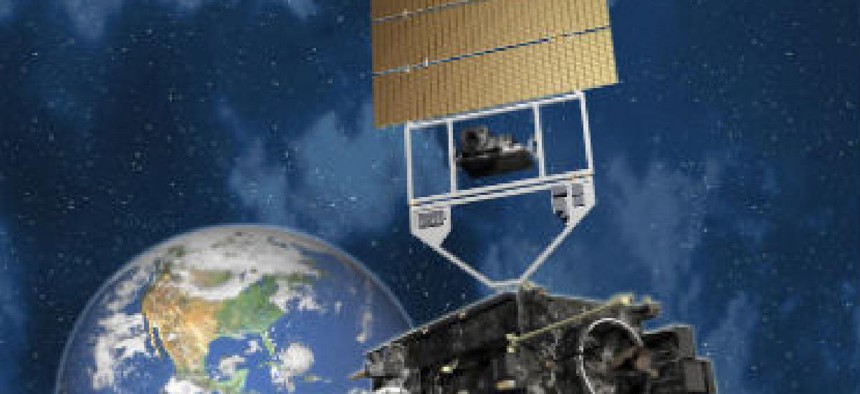Satellite instrument ready early

The satellite program, which has recently come under IG criticism, is ahead of schedule.

The GOES-R satellite is due to launch in 2015. (NOAA image)
The first of six instruments that will be equipped on the first satellite to launch in 2015 through the Geostationary Operational Environmental Satellite-R (GOES-R) program has been developed seven months ahead of schedule.
The instrument, Extreme Ultraviolet and X-ray Irradiance Sensors (EXIS), will signal forecasters on the ground with early warning information pertaining to solar storms, providing scientists a more accurate measure of solar energy radiating toward the earth that could potentially disrupt power grids and telecommunications.
EXIS was built and tested by the University of Colorado's Laboratory for Atmospheric and Space Physics, and it will be shipped across the state to nearby Littleton, Colo., where Lockheed will install it to the spacecraft.
"Severe space weather has the potential to cause significant damage to the U.S. and global economy, so it's critical GOES-R has this technology in place as quickly as possible to monitor it," said Mary Kicza, assistant administrator for the National Oceanic Atmospheric Administration's Satellite and Information Service.
It is unclear whether the early completion of EXIS will have any effect on the satellite's launch date, which NOAA insists is still on schedule for October 2015. The positive news is likely not enough to satisfy the Commerce Department IG's office, which claimed in its latest report that the satellite was not likely to get off the ground until February 2016.
That report was critical or two of the satellite's most integral systems, the Advanced Baseline Imager (ABI) and the Geostationary Lightning Mapper (GLM) which increased in cost a combined $350 million from initial NOAA estimates. ABI is of particular interest, however, because NOAA has stated publicly that it expects the ABI sensor to provide a net economic benefit of $4.6 billion through improved forecasting.
The remaining planed GOES-R instruments are:
• The Advanced Baseline Imager, the primary instrument on GOES-R for imaging Earth's weather, climate, and environment;
• Geostationary Lightning Mapper, which will provide for the first time a continuous surveillance of total lightning over the western hemisphere from space;
• The Space Environment In-Situ Suite, which consists of sensors that will monitor radiation hazards that can affect satellites and communications for commercial airline flights over the poles;
• The Solar Ultraviolet Imager, a high-powered telescope that observes the sun, monitoring for solar flares and other solar activity that could impact Earth, and
• The Magnetometer, which will provide measurements of the space environment magnetic field that controls charged particle dynamics in the outer region of the magnetosphere. These particles can be dangerous to spacecraft and human spaceflight.
NEXT STORY: White House releases We the People API






